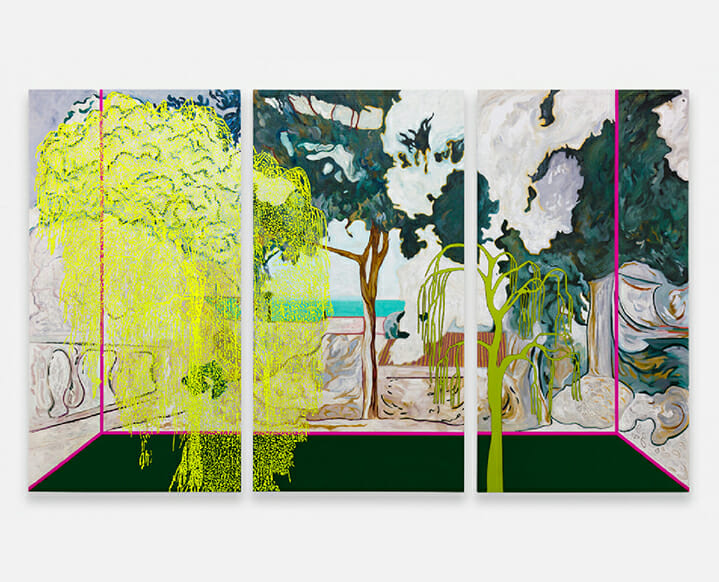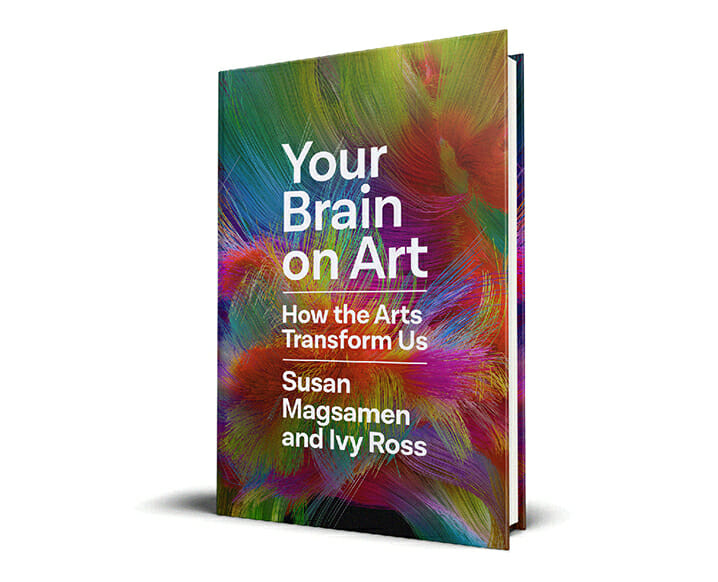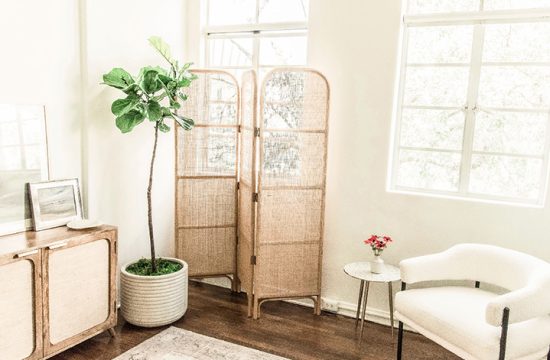The tools we use to combat stress can get as serious as the stressors themselves — but not all of them have to be! Art therapy possesses proven benefits to help us reduce anxiety, and can be so fun. In fact, that’s often the point.
Backed by increasing scientific evidence that a creative practice can improve mental health, art educator Berry Stein of Art Life Practice has a mission to cultivate everyday art-making and creative wellness.
Learn about Berry’s favorite art books and museums, plus a bit about the mental health benefits that make her private classes and at-home art kits just so special.
5 Mental Health Benefits Of Art
01 Reduces Stress and Anxiety | Art making combines self-expression, improvisation and problem solving with mindfulness, which slows down your breathing and can decrease heart rate, blood pressure and muscle tension.
02 Promotes Mindfulness | The act of repetitive creative motions like drawing, painting, collaging or embroidering floods your brain with dopamine, that delicious chemical that makes you feel content, joyful, grounded, and motivated.
03 Boosts Creativity | Making art encourages creativity and imagination, helping you think outside the box.
04 Enhances Mood | Creating of any kind wards off depression. The colors and images you create can uplift your mood and boost your overall sense of well-being.
05 Fosters Self-Care | Taking time for yourself and indulging in creative pursuits is an essential aspect of self-care and protects the brain from aging. Every time you engage in a new or complex activity, your brain creates new connections between your brain cells. This ability to forge new neural pathways and connections is known as brain plasticity, or neuroplasticity.
Where To Go For Inspiration In Los Angeles


Whitney Bedford at the VIELMETTER
When observing/experiencing art, I am the type of person who will look at the work first, rush over to the wall text to get as much context as possible, and then go back and look closely and slowly again. As an educator, I am a big fan of wall text and didactics because it grounds the work somewhere in a place and time. I also think it’s very important to observe artwork from different perspectives: get up very close and then make your way back, or vice versa. Visual literacy has been my passion for a very long time, and I have always been a fan of the Toledo Museum of Art’s program The Art of Seeing which identifies six different steps that you can take in order to fully engage and experience a work of art. It’s fascinating!
This list just scratches the surface, but it represents a wide variety of artists:
+ Night Gallery
+ Ghebaly Gallery
+ Vielmetter Los Angeles
+ David Kordansky Gallery
+ Tanya Bonakdar Gallery
+ Karma
Art At Home: What To Read, Make + Listen To Now
The Artist’s Way | This book by Julia Cameron was one of the primary inspirations for me starting Art Life Practice. I highly recommend that everyone read it and follow the program to the very best of their abilities.
Devotions | I keep a copy of Mary Oliver’s book of poetry in almost every room in my house. She provides endless inspiration and captures the essence of beauty in all its many forms in such an elegant, profound way.

 Your Brain on Art | I have been following Susan Magsamen’s work at the International Arts + Mind Lab at Johns Hopkins for years and was so excited when I found out that she was writing a book with Ivy Ross, the Vice President of Design for Hardware at Google. While I am used to reading studies and articles on neuroscience and creativity that are overly data driven and dry, what makes this book so compelling is the accessible and engaging nature of the language the authors use. Magsamen and Ross expertly make the highly complex/academic world of neuroscience feel tangible and understandable (which is so helpful for me and all the other non-science people), and demonstrate through really powerful evidence how transformative experiences with art can be.
Your Brain on Art | I have been following Susan Magsamen’s work at the International Arts + Mind Lab at Johns Hopkins for years and was so excited when I found out that she was writing a book with Ivy Ross, the Vice President of Design for Hardware at Google. While I am used to reading studies and articles on neuroscience and creativity that are overly data driven and dry, what makes this book so compelling is the accessible and engaging nature of the language the authors use. Magsamen and Ross expertly make the highly complex/academic world of neuroscience feel tangible and understandable (which is so helpful for me and all the other non-science people), and demonstrate through really powerful evidence how transformative experiences with art can be.
Sol Lewitt’s Letter To Eva Hesse | In an impassioned, truly spectacular 1965 letter to his dear friend, the trailblazing sculptor Eva Hesse, artist Sol LeWitt lays out a creative life credo, urging her to cease overthinking her work and in his words: “Just DO.” This five-page missive offers a wellspring of inspiration. The two artists were close friends and creative kindred spirits, exchanging ideas and influencing each other’s work in a variety of ways. I highly recommend reading LeWitt’s letter in its entirety. You will no doubt be moved and inspired by it!
The Getty Museum’s podcasts Recording Artists and Art + Ideas are also two of my favorites. I highly recommend them if you are interested in learning about artists, art history, and culture at large.
The Art Life Practice kits These kits evolved from the early-days workshops I host in Los Angeles — interactive, free-flowing creative experiences that are transformative. In our classes, people let loose–no rules, just art. The kits let people do this at home. Each one includes unique prompts and guides to get you started on your creative adventure—something science has proven to expand the mind’s capacity to focus and create in all aspects of life.
What form of art therapy has been inspiring you lately? Visit a few of our favorite artists’ studios next!
Read Next: In The Studio With The L.A. Ceramicist Behind Earth + Element
Share the post “Art Therapy: 8 Ways to Use Art to Improve Your Mental Health”











